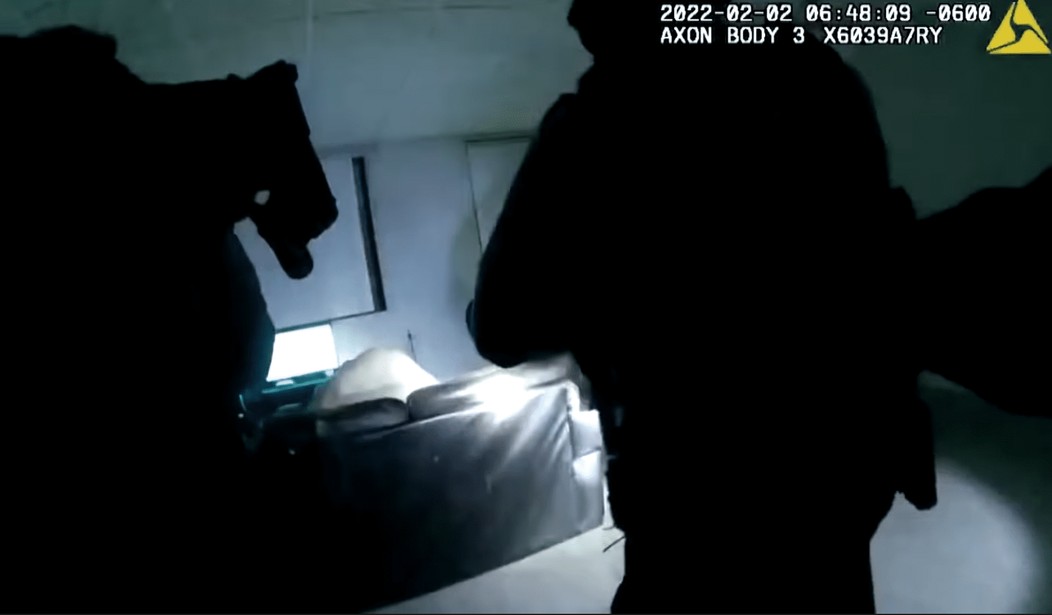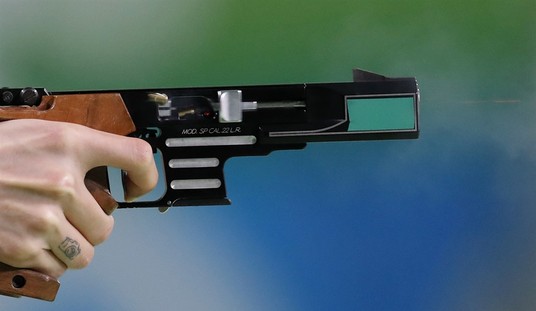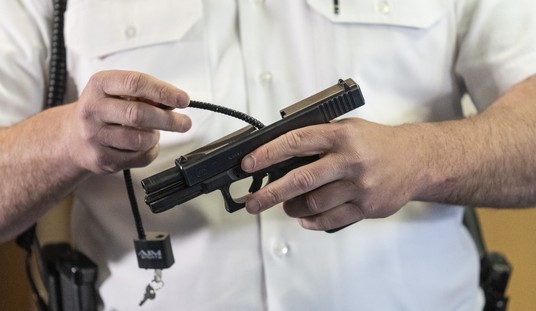The chief prosecutor in Hennepin County, Minnesota says he’s asking the state’s far-left Attorney General to investigate a no-knock raid on a Minneapolis apartment on Wednesday that led to the fatal shooting of an armed man asleep inside. 22-year old Amir Locke wasn’t named in the warrant granting permission for the raid, which was undertaken as part of a homicide investigation, but was shot by a SWAT officer after he was spotted holding a gun.
After police entered the apartment, officers quickly identified a man inside, body camera footage shows.
“Hands! Hands! Hands!” one officer yells while others yell “Get on the fu**ing ground!” as they make their way toward the back of a couch where a man is seen wrapped in blankets at 6:48 a.m., according to the footage. One officer kicks the back of the couch, appearing to wake up the man, who looks up to see the officers all around him.
He begins to try and stand up, still wrapped in blankets, and is seen holding a gun. Three gunshots are then heard from officers.
A screenshot provided by the police department from the body camera video shows the weapon more clearly.
“The involved officer was just outside the frame in the direction the barrel is emerging from the blanket,” said Huffman.
There’s no doubt that Locke had a gun when he was shot. The question is whether he posed a threat to the officers at that time.
Unlike the no-knock raid that resulted in the death of Breonna Taylor in Louisville, Kentucky in 2020, there is bodycam footage of the officers in Minneapolis entering the apartment, and you can hear them loudly announce “police” and “search warrant.” It’s unclear, however, whether Locke actually heard them, because it appears he doesn’t start stirring from underneath the blankets covering him on the couch until police are literally almost on top of him, when an officer kicks the back of the couch where he’s laying.
Interim Minneapolis police chief Amelia Huffman says officers had to make a split-second decision on whether or not to fire.
“As they got close, you can see, along with an individual emerging from under the blanket, the barrel of a gun, which comes out from the blanket,” said Huffman. “The officer had to make a split-second decision to assess the circumstances and to determine whether he felt like there was an articulable threat, that the threat was of imminent harm, great bodily harm or death, and that he needed to take action right then to protect himself and his partners.”
The initial release from authorities said “officers encountered a male who was armed with a handgun pointed in the direction of officers.”
Officer Mark Hanneman, as identified by the City of Minneapolis, then shot at and hit Locke. The police department says aid was immediately provided as the officers carried him down to the lobby to meet paramedics.
The officer has been placed on administrative leave while the investigation into the shooting takes place, but one Second Amendment group in the state says based on the video, they believe that Locke had nothing wrong before he was shot and killed.
The assessment from the Minnesota Gun Owners Caucus comes after the city released police body-worn camera video showing the officers entering the unit in the Bolero Flats Apartment Homes, at 1117 S. Marquette Av., shortly before 7 a.m. Officers quietly unlocked the door of the unit, and as they entered screamed “search warrant!” with their guns drawn while Locke laid on a couch under a blanket. As Locke stirred, his right hand could be seen holding a gun, and within seconds one of them opened fire and fatally wounded the young man.
As seen in the video, “Mr. Locke appears to be sleeping on the couch during the execution of a no-knock warrant,” read a statement from Bryan Strawser, who chairs the caucus. “He is awoken with a confusing array of commands coming from multiple officers who are pointing lights and firearms at him.”
Rob Doar, a caucus senior vice president, said that Locke “did what many of us might do in the same confusing circumstances. He read for a legal means of self-defense while he sought to understand what was happening.”
Doar asserted that “the tragic circumstances of Mr. Locke’s death were completely avoidable. It’s yet another example where a no-knock warrant has resulted in the death of an innocent person.”
Amir Locke had every right to possess a firearm. In fact, his family says that he had a valid concealed carry permit (not that he needed one in order to possess a gun in the apartment). And while I wouldn’t recommend falling asleep on a couch with a gun in hand, there’s nothing illegal about doing so. In fact, gun control activists have passed gun storage laws in a number of states that require you to keep your gun locked up at all times unless it’s under your control, so you could make the argument that Locke was simply complying with the “best practices” suggested by groups like Giffords and Everytown for Gun Safety.
Locke was shot and killed because he had a gun; a gun that he was legally allowed to possess in a residence where he was legally allowed to be. That doesn’t automatically mean that the officer was in the wrong in the eyes of the law, but it damn sure means there should be an investigation, and it once again raises questions about the use and utility of no-knock raids, particularly in circumstances that are investigatory in nature. It’s one thing to burst through the door of an apartment when responding to a life-or-death hostage situation. It’s something else entirely to do the same when you’re hoping to collect evidence in an ongoing investigation, even one related to a homicide.
My bottom line: you shouldn’t be killed for having a gun that you’re legally allowed to possess in a place where you have every right to be. It certainly appears that was the case for Amir Locke, though honestly, I wish that Keith Ellison was staying far away from this case, because injecting his far-left politics into a situation that demands a dispassionate investigation is likely to fuel suspicion that a potential charging decision or prosecution is going to be based on anti-police attitudes and not the evidentiary record.









Join the conversation as a VIP Member